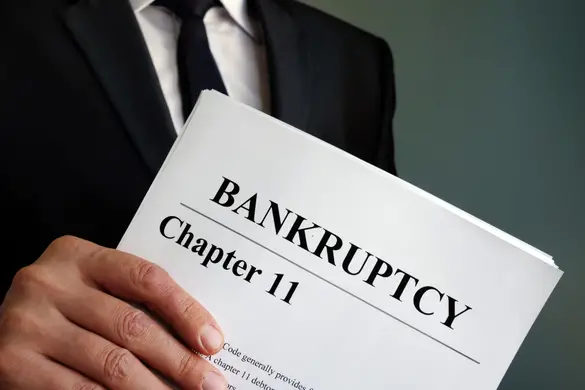
There are several steps to reorganizing under chapter 11 bankruptcy. In fact, many debtors provide themselves the time needed to restructure business assets by continuing operations under chapter 11. Since chapter 11 prevents creditors from acting for a period, affected businesses have time to reorganize by liquidating assets, downsizing, or deciding if bankruptcy is right for you. As a financial professional, keep your business afloat by reorganizing its finances under chapter 11. Read on to discover how to reorganize under chapter 11 bankruptcy.
Declare Chapter 11 Bankruptcy
Of course, declaring chapter 11 bankruptcy is the first step in reorganizing assets under it. Chapter 11 cases begin when the applicable petition is filed in a bankruptcy court. Typically, these petitions are filed by the debtor themselves, but three or more creditors can collaborate to file involuntary bankruptcy petitions against defaulting individuals. Start the process by simply filing the petition in a bankruptcy court, either where you’re physically located or where your business is incorporated or organized. Surely, begin the bankruptcy reorganization process by filing a chapter 11 declaration petition.
Partner With Bankruptcy Attorney
Second, provide legal direction and assistance to your bankruptcy reorganization by partnering with a bankruptcy attorney. The main benefit of chapter 11 is the ability to continue business operations during your court case, but time-sensitive paperwork and court meetings often take significant amounts of time. Therefore, reduce the time spent on these tasks by hiring a bankruptcy attorney to perform them for you. This way, you receive guidance from a bankruptcy expert while freeing up time to run your business. Absolutely, offer more time to run your business, as well as expert guidance by recognizing you business needs power of attorney.
Submit Plan of Reorganization
Third, submit your plan of reorganization to your chapter 11 court. You’ll be responsible for many documents and reports throughout the process, and the plan of reorganization is one of the most important. It details how you plan to repay your creditors, and must be approved by the court before proceeding. In fact, once the plan is accepted, your dischargeable debts are wiped. Explain how you’ll repay each claim and creditor class, including secured creditors, priority unsecured creditors, general unsecured creditors, and equity security holders. Provide yourself the most favorable terms by filing your plan within 120 days of declaring bankruptcy, as creditors can submit competing plans after this deadline. Certainly, offer favorable terms and a repayment structure by submitting your plan of reorganization.
Continue Operations
Next, continue running your business as your chapter 11 case and reorganization moves through the court system. Typically, businesses filing chapter 11 continue operations, with the debtor, now a debtor-in-possession, running the business. Continue operating your business normally, however, there are several financial decisions that can’t be made without the court’s permission. These include the sale of assets (that aren’t inventory), starting/ending a rental agreement, or expanding/stopping business operations. Additionally, the courts control paying/retaining attorneys and vendor/union contracts. Definitely, make the most of your reorganization time by continuing to operate your business.
Make Payments
Lastly, reorganize your assets by making payments according to your plan. This process often begins once the judge approves a plan of reorganization. Of course, this means entering a new contract with creditors, allowing them to sue if you default any further. Simply continue paying off your debts according to the plan, for however long is necessary. Once all required secure payments are made to the unsecured creditor class, ask the court to discharge the rest of your unsecured debts. This way, the debts are wiped clean so you don’t have to pay them. Of course, end your chapter 11 case by paying off creditor debts so the rest can be discharged.
Reorganizing under chapter 11 bankruptcy can be done in a myriad of ways. For example, begin the bankruptcy reorganization process by filing a chapter 11 declaration petition. Second, offer more time to run your business, as well as expert guidance by partnering with a bankruptcy attorney. Third, offer favorable terms and a repayment structure by submitting your plan of reorganization. Next, make the most of your reorganization time by continuing to operate your business. Finally, end your chapter 11 case by paying off creditor debts so the rest can be discharged. When wondering how to reorganize under chapter 11 bankruptcy, consider the steps described above.
 Business First Family Business, Accounting, Finance, Investing, Marketing And Management
Business First Family Business, Accounting, Finance, Investing, Marketing And Management